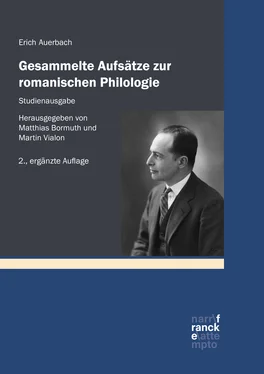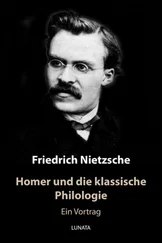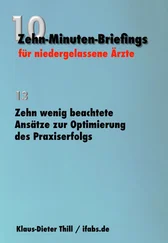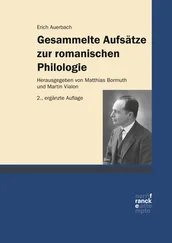Dante’s prayer to the Virgin [Paradiso, XXXIII]Lobrede and earlier eulogies (1949/50)1
In memoriam Eduard NordenNorden, E.
The structure of DanteDante’s famous text is very similar to a classical form of prayerLobrede, described by Eduard Norden in his book Agnostos Theos 2 as der Du-Stil der Prädikation. 3 DanteDante’s text begins with an invocation composed of several members:
Vergine madre, figlia del tuo figlio,
umile ed alta più che creatura
termine fisso d’eterno consiglio;
it continues with an enumeration of Mary’s accomplishments and virtues; this enumeration was called in Greek tradition aretalogyAretalogie or eulogy, in Christian usage doxologyDoxologie. It is constructed in an anaphoricalAnapher form with ‘thou’:
Tu sei colei che l’umana natura
nobilitasti sì, che il suo fattore
non disdegnò di farsi sua fattura.
Nel ventre tuo si raccese l’amore
per lo cui caldo nell’eterna pace
così è germinato questo fiore.
Qui sei per noi meridiana face
di caritade, e giuso intra i mortali
sei di speranza fontana vivace.
Donna, sei tanto grande e tanto vali,
che qual vuol grazia ed a te non ricorre,
sua desianza vuol volar senza ali.
La tua benignità non pur socorre
a chi domanda, ma spesse fiate
liberamente al domandar precorre.
In te misericordia, in te pietate,
in te magnificenza; in te s’aduna,
quantunque in creatura è di bontate.
Then follows the supplicatio supplicatio , the petition for help in a particular emergency.
This scheme corresponds exactly to the form described by NordenNorden, E.. It occurs in Greek poetry; many examples are found in Latin literature. There are some other forms of the eulogy besides the tu anaphoraAnaphertu-Anapher; one of the most widespread is the eulogy with relative clauses which, too, has been analysed in Norden’s book. Both forms are combined in one of the earliest and most beautiful Latin eulogies we possess, the prooemium of Lucretius’ De rerum natura :
Aeneadum genitrix, hominum divomque voluptas,
Alma Venus! caeli subter labentia signa
Quae mare navigerum, quae terras frugiferentes
Concelebras; per te quoniam genus omne animantum
Concipitur, visitque exortum lumina solis.
Te, Dea, te fugiunt venti, te nubila caeli
Adventumque tuum; tibi suavis Daedala tellus
Submittit flores; tibi rident aequora ponti
Placatumque nitet diffuso lumine caelum …
Te sociam studeo scribundis versibus esse …
Among the other examples4 several were certainly known to DanteDante; as he was, consciously and unconsciously, open to the influence of classical patterns of style, one may be tempted to draw the conclusion that he had been inspired by his ancient masters – VergilVergil, OvidOvid, StatiusStatius – to give to the prayerLobrede a classical form, in spite of its Christian substance. But this conclusion would prove hasty. Obviously, such forms of prayerMittelalterLobrede im MA are very old; the tu anaphoraAnaphertu-Anapher and similar forms of eulogy occur also in Jewish and early Christian texts. In the VulgateVulgata, DanteDante could find several passages such as David’s benediction, I Paralipomenon 29, 10ff.:5
Benedictus es Domine Deus Israel patris nostri ab aeterno in aeternum. Tua est Domine magnificentia, et potentia et gloria atque victoria: et tibi laus: cuncta enim quae in caelo sunt et in terra, tua sunt; tuum Domine regnum, et tu es super omnes principes. Tuae divitiae, et tua est gloria: tu dominaris omnium, in manu tua virtus et potentia: in manu tua magnitudo, et imperium omnium … Domine Deus Abraham et Isaac et Israel patrum nostrorum, custodi …
There is, however, a difference between the Biblical and the classical eulogies, in spite of the almost complete identity of structure; the difference is instinctively felt by the reader. For its exact analysis, we are again indebted to Eduard NordenNorden, E.; he has shown that the particular form of the tu anaphoraAnaphertu-Anapher which begins with ‘thou art’6 and corresponds to God’s own words ‘I am’,7 is decidedly and exclusively Jewish,8 not Hellenic or Roman. None of the examples taken from classical literature contains this form; in Greek or Latin, it appears only late, through Christian and similar influences. As DanteDante’s anaphorasAnapher are mostly of this pattern ( tu sei , sei ), or of the closely similar ‘in Thee is’ or ‘Thine is’,9 he seems to follow the Jewish and Biblical rather than the classical tradition.
In analyzing the difference between classical and Biblical patterns of the tu anaphoraAnaphertu-Anapher we may, inspired by Norden’sNorden, E. observations, go somewhat further than he did. The classical eulogies normally enumerate the deeds and accomplishments of the gods and heroes, or their spheres of power, their qualities, and attitudes; in the Jewish forms (‘Thou art’ or ‘Thine is’ followed either by an abstract tetra or by names of parts of the universe), the expression of the essence of the divinity or of its omnipotence prevails. Even in almost identical statements (HoraceHoraz, Carmina , II, xix: tu flectis amnes, tu mare barbarum ; Ps. 88, 10: tu dominaris potestati maris ) the context makes the difference obvious: HoraceHoraz means a very definite and limited sphere of influence, and statements such as his are mostly based on mythical tradition;10 in the Psalm, the statement is a partial expression of God’s omnipotence. The Jewish attributes, even if they are concerned with particulars, are always aimed at the whole of the worshipped object, God. The Jewish God is not involved in earthly occurrences, he has no shape or attitude on earth; he is indeed connected with history by the promise made to Abraham,11 but he himself does not participate in earthly events, nor does he appear in an earthly landscape and in human-like form, as does Venus in Lucretius’ prooemium or the other objects of Greek or Roman worship, who all have a mythical history, an earthly appearance, and earthly residences. Their accomplishments and appearances, sometimes also their residences, are described in the eulogies, for example in VergilVergil’s praise of Hercules:12
… qui carmine laudes
Herculeas et facta ferunt: ut prima novercae
Monstra manu geminosque premens eliserit angues;
Ut bello egregias idem diiecerit urbes
Troiam Oechaliamque; ut duros mille labores
Pertulerit. Tu nubigenas, invicte, bimembris
Hylaeum Photumque manu, tu Cresia mactas
Prodigia et vastum Nemea sub rupe leonem.
Te Stygii tremuere lacus, te ianitor Orci
Ossa super recubans antro semesa cruento;
Nec te ulla facies, non terruit ipse Tyrtaeus
Arduus, arma tenens; non te rationis egentem
Lernaeus turba capitum circumstetit anguis.
Salve vera Iovis proles, decus addite divis,
Et nos et tua dexter adi pede sacra secundo.
Other examples are offered in the texts referred to in our note 4. Each member of such eulogies represents something concrete and limited, distinctly different from the preceding and the following, whereas the Jewish eulogies, the benediction of David, and the passages in the Psalms paraphrase in all their members, again and again, the same idea: God’s essence, omnipotence, and omnipresence.
In the first centuries of the Christian era, with the growing influence of the new religious movements, and especially of Christianity, several important changes can be observed in the form of prayersLobrede and eulogies.
Читать дальше












